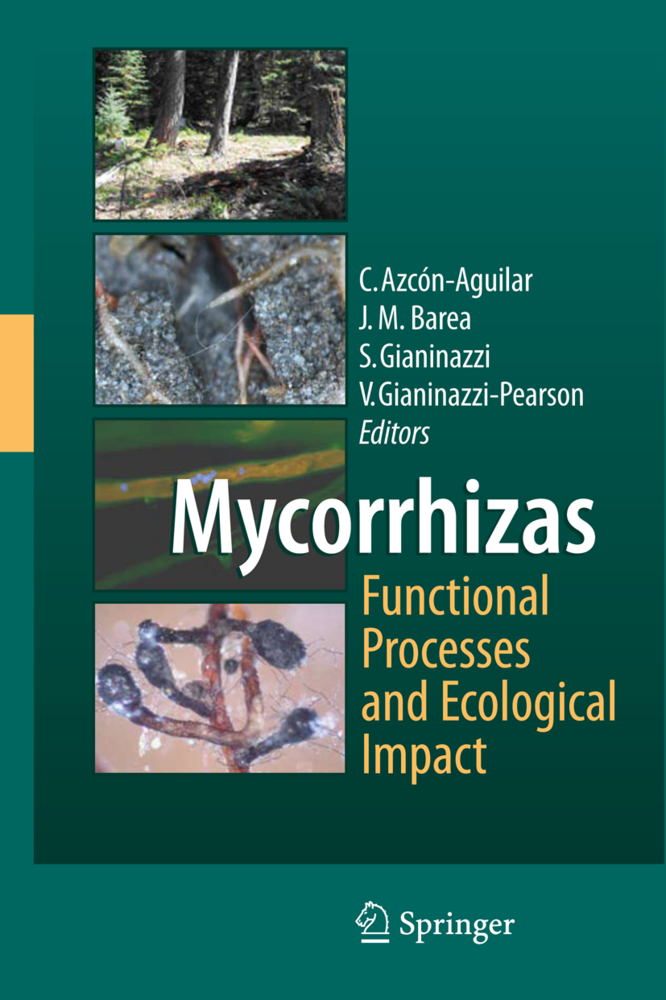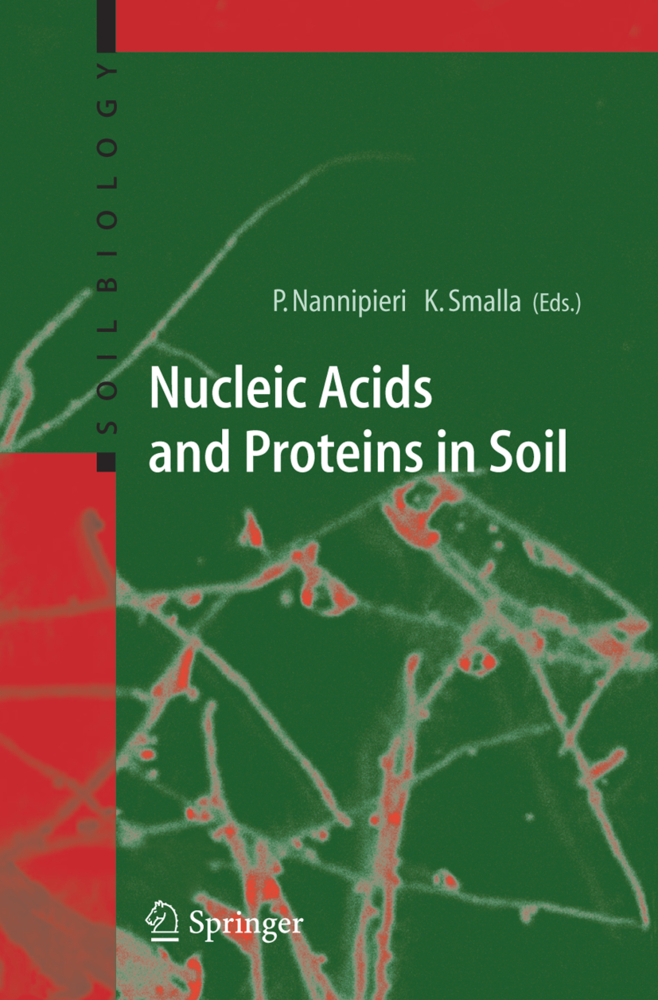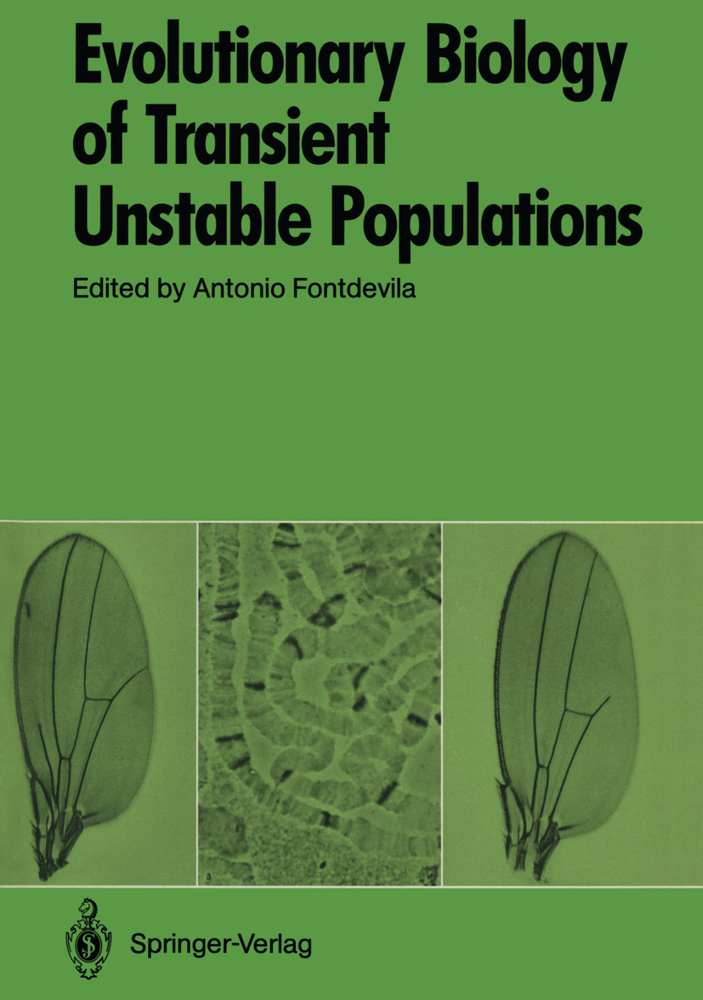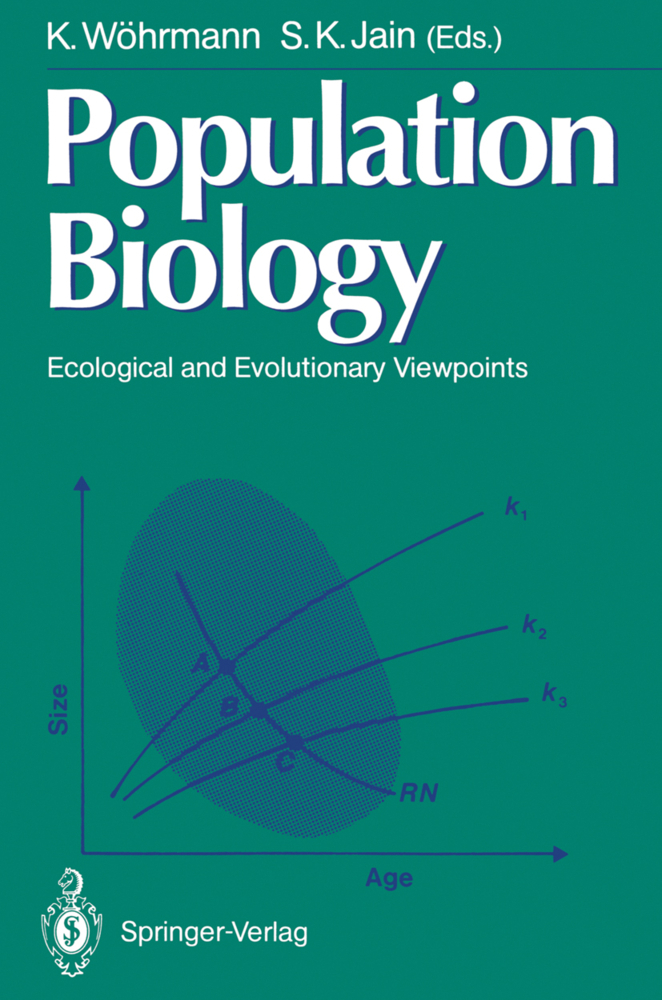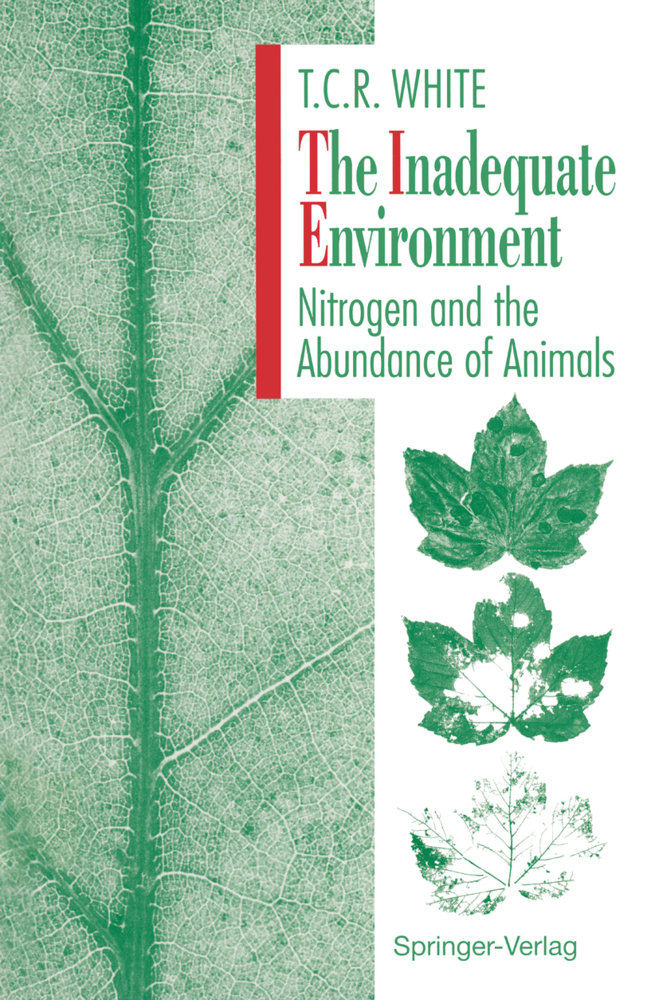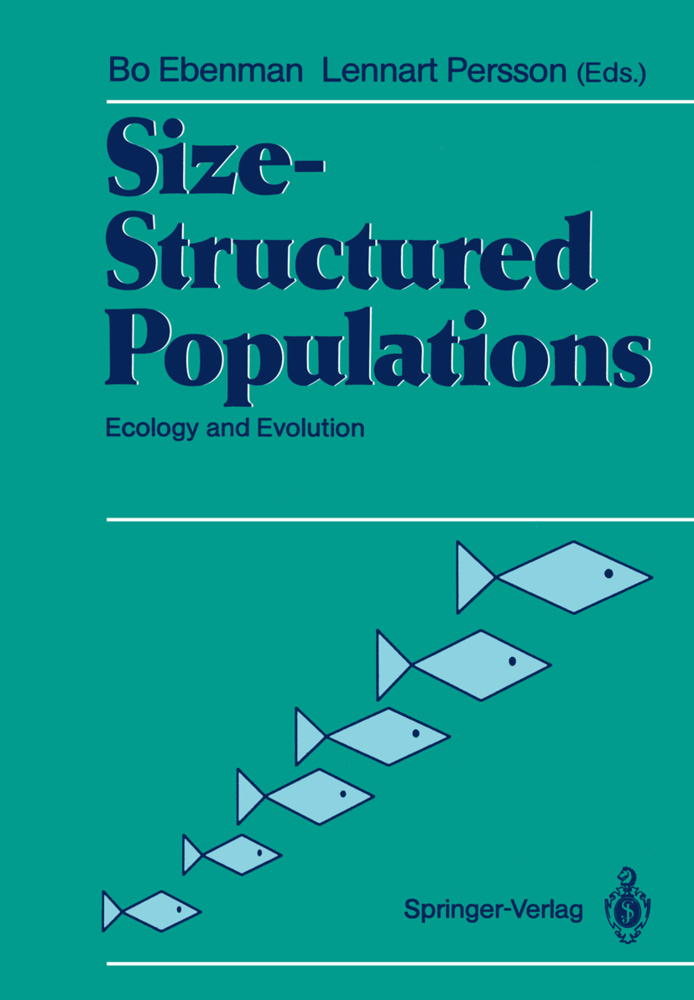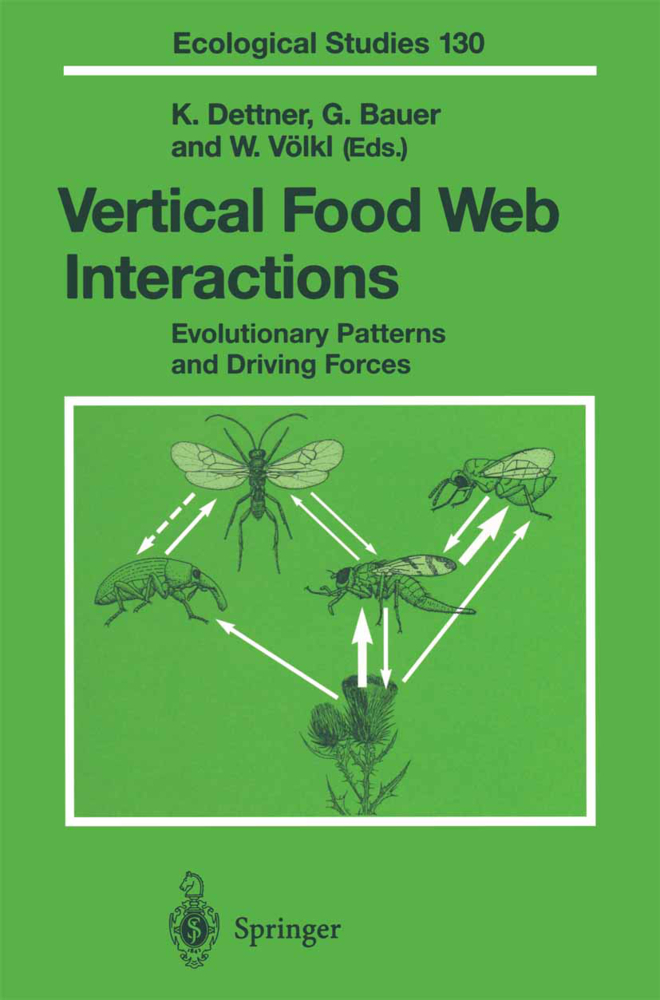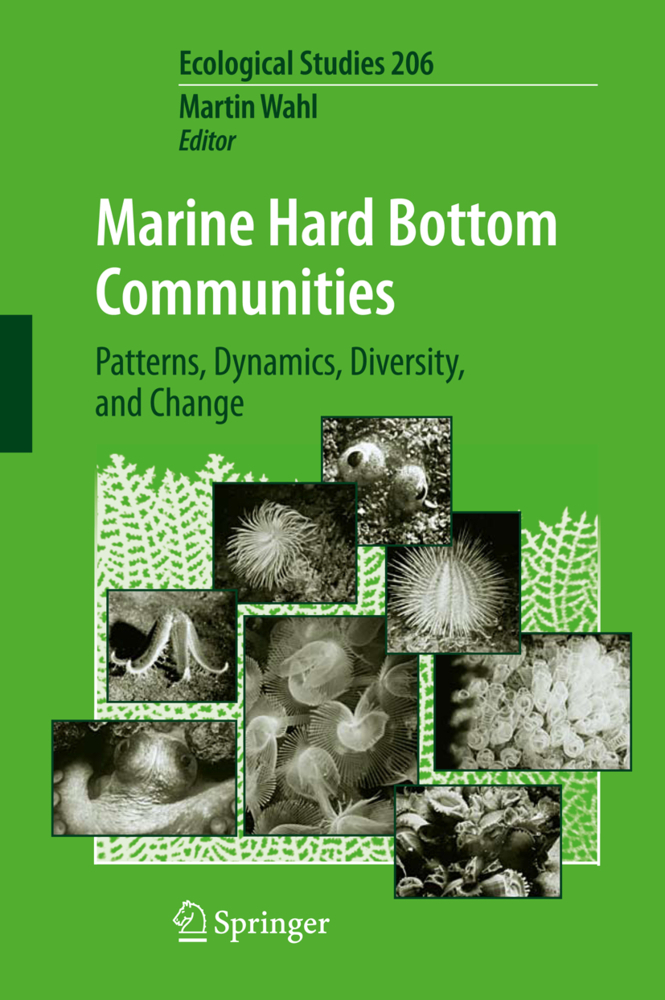Mycorrhizas - Functional Processes and Ecological Impact
Functional Processes and Ecological Impact
Mycorrhizal symbioses are central to the multitrophic interactions that impact plant productivity, competitiveness and survival. This book integrates present-day knowledge from well-known research groups on some of the topics which are at the forefront of mycorrhizal research. Topics include the cell programmes that drive mycorrhiza formation and function, the processes sustaining symbiotic mutualism, stress response mechanisms in mycorrhizal symbionts, and the diversity and ecological impacts of mycorrhizal systems. The efficient management of mycorrhizal systems has the potential to support the sustainable production of quality foods while ensuring environmental quality for future generations.
1;Preface;5 2;Contents;8 3;Contributors;10 4;Chapter 1 Soil Microbial Resources and Agricultural Policies;14 4.1;1.1 Introduction;14 4.2;1.2 The Current State of European Agriculture;16 4.3;1.3 The Current Farming Model and Its Consequences;17 4.4;1.4 Alternatives to the Current Agricultural Model;18 4.5;1.5 Eco-Efficient Agriculture;19 4.6;1.6 Current Ethical Challenges;21 4.7;1.7 The Agriculture of the Next Decade;25 4.8;1.8 AMF and Organic Farming;26 4.9;1.9 Conclusions;27 4.10;References;28 5;Chapter 2 Interspecies Altruism in Plant-Microbe Symbioses: Use of Group Selection Models to Resolve the Evolutionary Paradoxes;30 5.1;2.1 Introduction;30 5.2;2.2 Mutualism and Parasitism: Evolutionary Continuum or Discontinuity?;31 5.3;2.3 Legume-Rhizobia Symbioses: Mutualism and Antagonism Together;33 5.4;2.4 Symbiosis and Biological Altruism;36 5.5;2.5 Natural Selection for Interspecies Altruism;38 5.6;2.6 Conclusions;40 5.7;References;41 6;Chapter 3 Dissection of Genetic Cell Programmes Driving Early Arbuscular Mycorrhiza Interactions;45 6.1;3.1 Introduction;45 6.2;3.2 Signal Perception and Recognition Events Prior to Cell Contact;46 6.3;3.3 Symbiotic Partnership Through Early Morphological Integration;49 6.4;3.4 Intersymbiont Compatibility: Getting Around Host Defence Systems?;52 6.5;References;54 7;Chapter 4 Analysis of Mycorrhizal Functioning Using Transcriptomics;58 7.1;4.1 Introduction;58 7.2;4.2 From Identification of Single Genes to Transcriptomics;59 7.3;4.3 Establishment of the Experimental System;63 7.4;4.4 Construction and Analysis of a Subtractive cDNA Library;64 7.5;4.5 Expression of Copper-Binding Proteins;65 7.6;4.6 Concluding Remarks;67 7.7;References;68 8;Chapter 5 Protein Profiling Analyses in Arbuscular Mycorrhizal Symbiosis;72 8.1;5.1 Introduction;72 8.2;5.2 Proteomics in Mature Mycorrhiza;74 8.3;5.3 Proteomics at the Appressorium Stage;77 8.4;5.4 Fungal Proteomics;79 8.5;5.5 Conclusions and Future Perspectives;80 8.6;References;81 9;Chapter 6 Coordinated Nutrient Exchange in Arbuscular Mycorrhiza;84 9.1;6.1 Introduction;84 9.2;6.2 Creation of a New Compartment: The Symbiotic Interface;85 9.3;6.3 Phosphate Transport in Arbuscular Mycorrhiza;85 9.4;6.4 Nitrogen Transport;88 9.5;6.5 Carbon Partitioning in Arbuscular Mycorrhiza;90 9.6;6.6 Conclusions;93 9.7;References;94 10;Chapter 7 Deciphering the Arbuscular Mycorrhizal Pathway of P Uptake in Non-responsive Plant Species;99 10.1;7.1 Introduction;99 10.2;7.2 The Challenge of P Uptake from Soil and Symbiotic Interfaces;100 10.3;7.3 Diversity in Plant Responses to AM Colonisation;102 10.4;7.4 Radiotracer Studies Enable Measurement of AM Contribution Regardless of Whole Plant Responses;104 10.5;7.5 The Role of P i Transporters in P Uptake by an AM Plant;107 10.6;7.6 Conclusions;112 10.7;References;113 11;Chapter 8 Mechanisms Underlying Heavy Metal Tolerance in Arbuscular Mycorrhizas;117 11.1;8.1 Introduction;117 11.2;8.2 Mycorrhizas and Plant Metal Homeostasis;118 11.3;8.3 Mechanisms of Metal Homeostasis in AM Fungi;119 11.4;8.4 The Mycorrhizal Plant;125 11.5;8.5 Perspectives;125 11.6;References;128 12;Chapter 9 Priming Plant Defence Against Pathogens by Arbuscular Mycorrhizal Fungi;133 12.1;9.1 Introduction;133 12.2;9.2 Mycorrhiza-Induced Resistance Against Pathogens;134 12.3;9.3 Effects of AM Symbioses on Phytophagous Insects;135 12.4;9.4 Mechanisms of Mycorrhiza Induced Resistance;135 12.5;9.5 Modulation of Plant Defence Responses in Mycorrhizal Plants;137 12.6;9.6 Priming of Defence Mechanisms in Mycorrhizal Plants;138 12.7;9.7 Signalling Pathways Involved in Mycorrhiza Priming of Defence;140 12.8;9.8 Conclusions;142 12.9;References;142 13;Chapter 10 Reconciliation of Conflicting Phenotypic and rRNA Gene Phylogenies of Fungi in Glomeromycota Based on Underlying Patterns and Processes;146 13.1;10.1 Introduction;147 13.2;10.2 Character Analysis;149 13.3;10.3 Trees and Their Interpretation;151 13.4;10.4 Congruence in the rDNA Phylogeny;158 13.5;10.5 Conclusions;159
Azcon-Aguilar, Concepcion
Barea, José Miguel
Gianinazzi, Silvio
Gianinazzi-Pearson, Vivienne
| ISBN | 9783540879787 |
|---|---|
| Artikelnummer | 9783540879787 |
| Medientyp | E-Book - PDF |
| Auflage | 2. Aufl. |
| Copyrightjahr | 2009 |
| Verlag | Springer-Verlag |
| Umfang | 239 Seiten |
| Sprache | Englisch |
| Kopierschutz | Digitales Wasserzeichen |


